Crafting a Compelling RN Cover Letter
In the competitive field of nursing, a well-crafted RN cover letter is your key to unlocking the door to your dream job. It’s not just a formality; it’s your first opportunity to make a lasting impression on potential employers. This document allows you to showcase your unique qualifications, passion for nursing, and why you’re the ideal candidate for the role. A strong cover letter complements your resume, providing context and personality that can set you apart from other applicants. By following these guidelines, you can create a cover letter that effectively highlights your strengths and increases your chances of securing an interview. Remember that the cover letter is your voice, and its tone should align with the hospital’s or healthcare facility’s culture, so research the organization’s values and mirror them in your writing.
Understanding the Importance of an RN Cover Letter
Why a Cover Letter Matters
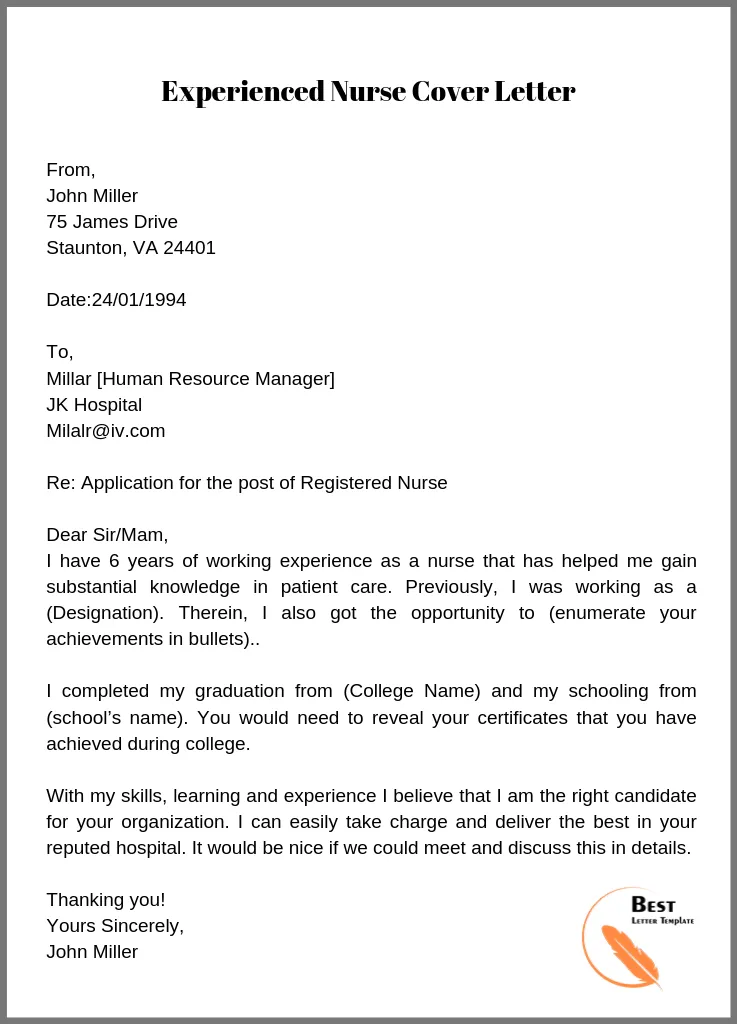
A cover letter is more than just a formality, it is your chance to personalize your application and tell your story beyond the bullet points of your resume. It provides a space to express your enthusiasm for the specific role and the organization. Many hiring managers read the cover letter first, making it a crucial tool for capturing their attention. A well-written cover letter can highlight your specific skills and achievements, demonstrating why you’re a perfect fit for the position. It offers the opportunity to elaborate on your experiences, skills, and career goals, as well as explain any gaps in your employment history. It also showcases your communication skills and attention to detail, reflecting your professionalism and commitment to excellence, making it an invaluable asset in your job search.
Highlighting Your RN Skills & Experience
Your RN cover letter should be a showcase of your nursing skills and experience. It’s an opportunity to present your qualifications and demonstrate how they align with the requirements of the job. Focus on the skills and experiences that are most relevant to the specific position you’re applying for. This could include clinical skills, such as administering medications or patient assessments, as well as soft skills like communication and teamwork. Provide examples of how you’ve utilized these skills in past roles to achieve positive outcomes, such as improved patient satisfaction scores or successful management of complex cases. Be sure to highlight your experience with specific patient populations or medical technologies, such as electronic health records, if applicable. Tailoring your approach to the job requirements will greatly enhance your chances of getting the interview.
Key Skills to Showcase
When writing your cover letter, be sure to spotlight your key nursing skills. These should include both technical abilities and soft skills. Clinical skills are paramount, so highlight your experience with tasks such as patient assessment, medication administration, wound care, and emergency response. Soft skills are equally critical, so demonstrate your ability to communicate effectively with patients, families, and colleagues. Highlight your teamwork capabilities, and your ability to remain calm under pressure. Leadership skills are highly sought after, particularly for roles that require supervising other nurses or managing patient care. Detail how you manage critical situations and prioritize tasks. Skills such as critical thinking, problem-solving, and adaptability are essential in the fast-paced world of healthcare, so showcase these with specific examples of how you have applied them to solve complex problems or improve patient outcomes.
Quantifying Your Achievements
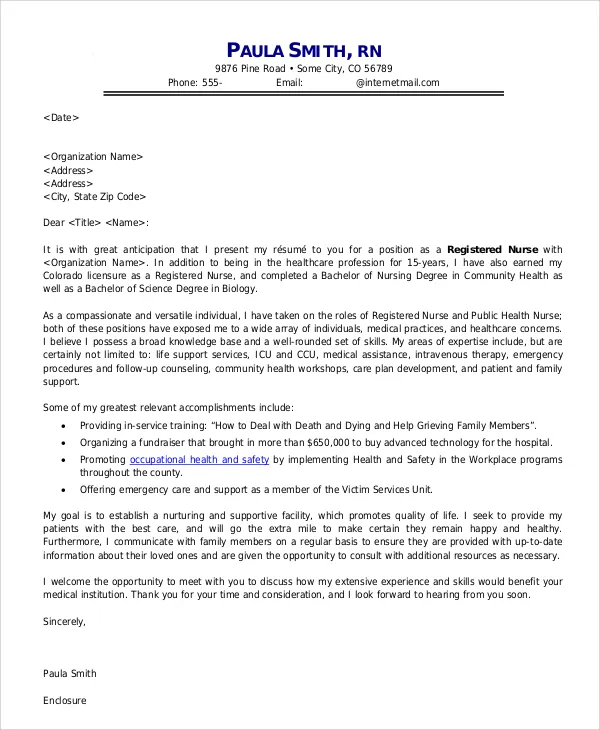
To make your cover letter stand out, quantify your achievements whenever possible. Use numbers and data to illustrate your accomplishments. Instead of saying that you improved patient care, state that you improved patient satisfaction scores by a specific percentage. If you implemented a new protocol or process, quantify the results. For example, “reduced patient readmission rates by 15%” or “successfully managed a team of 10 nurses.” Mention the number of patients you cared for or the number of successful procedures you performed. By providing concrete evidence of your accomplishments, you make your claims more credible and demonstrate the value you bring to an organization. This level of detail showcases your competence and professionalism, making a more compelling case for your candidacy. It demonstrates that you are not just a skilled nurse, but also a results-oriented professional.
Tailoring Your Cover Letter to the Job Description
Customize your RN cover letter to match each specific job description. This demonstrates your genuine interest in the role and your ability to address the employer’s specific needs. Begin by thoroughly reviewing the job posting, carefully noting the required skills, experience, and qualifications. Then, customize your cover letter to highlight the aspects of your background that are most relevant to these requirements. Use keywords from the job description throughout your cover letter. If the posting emphasizes teamwork, include examples of your collaborative work experience. If they value experience in a specific area of nursing, such as critical care or oncology, highlight your relevant experience. By directly addressing the employer’s needs, you will show that you are a good fit for the position and increase your chances of being selected for an interview. Tailoring the cover letter also proves you’re not using a generic template; you’re sincerely interested in the job.
Analyzing the Job Posting
Before you start writing, carefully analyze the job posting. Identify the key requirements, skills, and qualifications that the employer is seeking. Look for keywords and phrases that are used throughout the description. These keywords are critical, so you should incorporate them into your cover letter. Pay close attention to the responsibilities of the role. What tasks will you be expected to perform, and what kind of patient population will you be serving? Also, take note of any required certifications, licenses, or experience in specific medical settings. By taking the time to thoroughly analyze the job posting, you can ensure that your cover letter directly addresses the employer’s needs and demonstrates your qualifications and interest in the role. The better you understand the job requirements, the easier it will be to tailor your letter and increase your chances of being selected.
Using Keywords Effectively
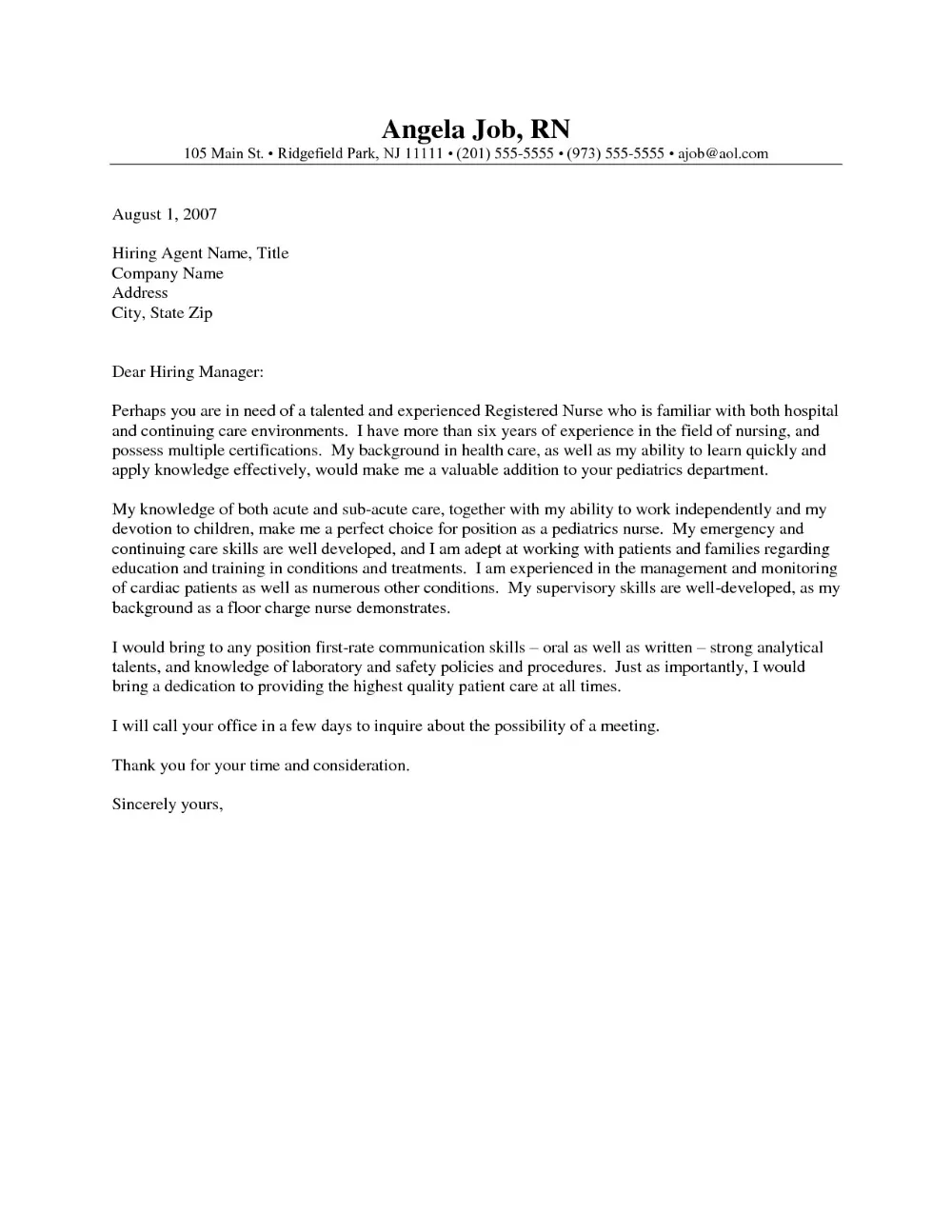
Use keywords from the job description throughout your RN cover letter. This will help your application get noticed by both human readers and applicant tracking systems (ATS). Identify the key skills, qualifications, and responsibilities listed in the job posting and incorporate those terms naturally into your writing. For example, if the job description mentions “patient assessment skills,” be sure to use that phrase in your cover letter. Use synonyms or related terms, such as “clinical evaluations” or “comprehensive patient evaluations,” to avoid keyword stuffing. Include keywords in your opening paragraph, the body of your letter, and your closing statement. Remember that your cover letter should still read naturally and reflect your unique voice. Use keywords strategically to highlight your qualifications and demonstrate how you meet the job’s specific requirements. This targeted approach will make your application more effective and help you stand out from the competition.
Structuring Your RN Cover Letter
A well-structured cover letter is easy to read and leaves a professional impression. Use a standard business letter format, with a clear header, an engaging opening, informative body paragraphs, and a strong closing. Keep your letter concise and focused, highlighting your most relevant skills and experiences. Make sure your letter follows a logical flow. Use concise language, and avoid jargon or overly complex sentences. By using a clear, organized structure, you can effectively communicate your qualifications and create a positive impression on the hiring manager. Keep in mind that the structure helps you show yourself off as a strong candidate for the job.
The Header Section
The header of your RN cover letter should include your contact information and the date, as well as the employer’s contact information. Start with your full name, address, phone number, and email address at the top of the page. If you have a LinkedIn profile, you can also include a link to it. Next, include the date, followed by the name, title, and address of the hiring manager. If you don’t know the hiring manager’s name, research it or use a general salutation like “Dear Hiring Manager.” Ensure that your contact information is current and accurate to make it easy for the employer to reach you. The header should be neat and well-formatted, and it sets the tone for the rest of your letter.
The Opening Paragraph
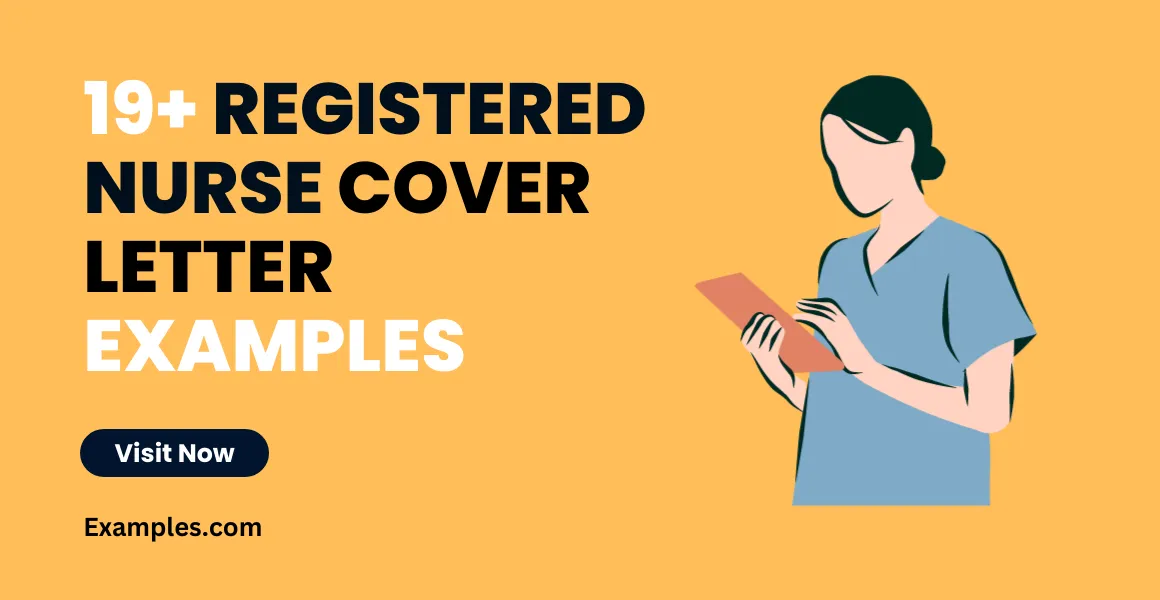
The opening paragraph is your chance to grab the reader’s attention. Start with a strong, engaging statement that clearly indicates the position you’re applying for and where you saw the job posting. Briefly mention your key qualifications and your interest in the role and the organization. Show your enthusiasm and connect the job to your career goals. You can also mention a specific achievement or skill that aligns with the job requirements. Keep it concise, aiming for no more than three to four sentences. The goal is to create an instant positive impression and encourage the reader to continue reading.
The Body Paragraphs
The body paragraphs are where you elaborate on your skills, experience, and qualifications. This is where you provide detailed examples of your achievements and how they relate to the job requirements. Use specific examples to illustrate your skills and responsibilities in previous roles. Provide quantifiable results whenever possible, such as improvements in patient outcomes or cost savings. Use keywords from the job description to show how your experience matches the employer’s needs. Use a few paragraphs to focus on the most important requirements and how you’ve met those criteria. Each paragraph should focus on a single key skill or experience, making it easy for the reader to quickly understand your qualifications. Maintain a professional tone and demonstrate your passion for nursing throughout these sections.
The Closing Paragraph
Your closing paragraph should reiterate your interest in the position and express your gratitude for the opportunity. Summarize your key qualifications, emphasizing your suitability for the role. End with a call to action, such as stating that you’re looking forward to hearing from the employer soon or that you’re available for an interview at their earliest convenience. Reiterate your contact information and thank the employer for their time and consideration. Make sure your closing is professional and courteous, and it leaves the reader with a positive impression.
Proofreading and Formatting Your Cover Letter
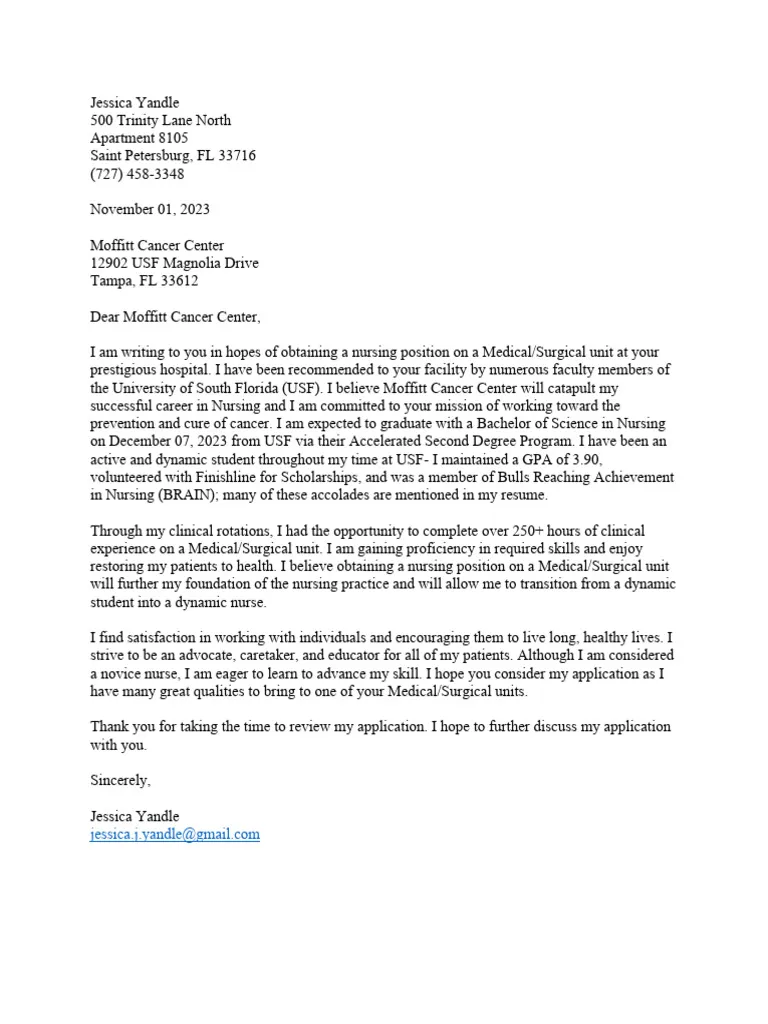
Proofreading and formatting are essential steps to ensure your cover letter makes a professional impression. A well-formatted and error-free cover letter demonstrates your attention to detail and professionalism. Proofread your letter for grammatical errors, spelling mistakes, and typos. Also, check for inconsistencies in formatting, such as font size, spacing, and alignment. Ask a friend, family member, or career advisor to review your letter for a second opinion. Ensure you use a professional font, such as Times New Roman, Arial, or Calibri, and keep the font size between 10 and 12 points. Use consistent spacing and margins, and ensure the letter is easy to read. By taking the time to carefully proofread and format your cover letter, you can significantly increase your chances of landing an interview.
Common Mistakes to Avoid
Several common mistakes can hurt your chances of getting an interview. One of the most common is sending a generic cover letter. Tailor each cover letter to the specific job and employer. Another common mistake is neglecting to proofread. Errors in grammar, spelling, and punctuation can make you seem unprofessional. Avoid using overly long paragraphs. Keep your writing concise and to the point. Don’t simply repeat your resume, but rather use the cover letter to elaborate on key qualifications and experiences. Avoid being overly casual or using slang. Keep your tone professional. Don’t include information that is irrelevant to the job. Ensure the letter is clear and well-organized, making it easy for the hiring manager to understand your qualifications.
Formatting Best Practices
Follow the best practices for formatting your RN cover letter. Use a standard business letter format with a clear header, introduction, body paragraphs, and closing. Choose a professional font, such as Times New Roman, Arial, or Calibri, and maintain a font size between 10 and 12 points. Use single spacing within paragraphs and double spacing between paragraphs. Align the text to the left, and avoid excessive use of bolding, underlining, or italics. Keep your margins at one inch on all sides. Proofread your letter carefully to avoid any errors or inconsistencies. Finally, make sure your letter is well-organized, easy to read, and visually appealing.
RN Cover Letter Examples & Templates
RN cover letter examples and templates provide a valuable starting point for crafting your own. They help you understand the structure, format, and language that are typically used in professional RN cover letters. However, remember that you should customize any template or example to reflect your own experience, skills, and the requirements of the specific job. Look for templates that are tailored to your particular area of nursing or experience level, such as new grad cover letter templates or those for experienced nurses. By studying different examples and templates, you can get a better sense of how to effectively highlight your qualifications and make a strong impression on potential employers. Remember that your cover letter is a personal statement, so adapt these templates to reflect your unique strengths.
Adapting the Examples to Your Situation
When using cover letter examples or templates, it’s important to adapt them to your specific situation. First, carefully review the job description and highlight the key requirements and qualifications that the employer is seeking. Then, tailor the template or example to highlight your relevant skills and experiences. Modify the language and examples in the template to align with your personal background and achievements. Replace the generic details with your specific accomplishments and quantifiable results. Customize the opening and closing paragraphs to reflect your enthusiasm for the specific job and organization. Make sure the tone and style of your cover letter reflect your personality and communication style. By personalizing the template, you’ll create a more compelling and effective cover letter that showcases your unique value as an RN. Always review your customized cover letter for any errors or inconsistencies before sending it.
Where to Find Cover Letter Templates
There are many resources where you can find cover letter templates. Many career websites, such as Indeed, LinkedIn, and Glassdoor, offer free cover letter templates. Professional resume writing services often provide cover letter templates as well. Search online for “RN cover letter templates” or “nursing cover letter examples” to find a variety of options. When choosing a template, make sure it’s relevant to your nursing specialty or experience level. Choose a template that aligns with the industry standards and best practices. Always adapt the template to your unique qualifications and the specific job you’re applying for, and remember to customize the examples and language to reflect your background. By using these templates, you’ll get a great starting point for creating your cover letter.
